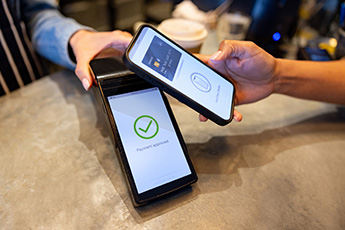It hopes the tree offices will increase employee creativity and satisfaction. After all, they are equipped with Wi-Fi, sky lights, meeting rooms and even a gas fireplace. The only catch could be the risk of what might happen if an employee who is deep in thought and looking at their phone or tablet forgets they are also 12 feet in the air. Let's hope the architects designed good guard rails too!
Your bank may not yet be ready to build a tree house in the main branch, but this unique solution to an issue may help open your mind to options too, as your bank team responds to declining cash usage in coming years.
Americans still love their cash and fewer cash payments in no way means less spending. However, as card usage increases, TSYS research finds 40% of people prefer to pay with credit cards, 35% with debit cards and 11% with cash.
Even the average amount of cash a person keeps in their wallet dipped to just $202, with most consumers saying they collected cash from an ATM rather than a bank teller.
Studies may differ slightly on the fine detail of exactly how much consumers are spending by cash versus card, but the overall trajectory is clear - consumers are increasingly apt to pull out a card over paper bills when making a purchase.
Also of note, when cash is used for payment it is increasingly used for low-value transactions and often by people with lower income. According to the 2015 Diary of Consumer Payment Choice, cash only accounted for 9% of total payment value in 2015 vs. 34% for debit and credit cards combined. Also, among households with an annual income of less than $25,000, 48% preferred cash vs. 14% of those earning more than $150,000.
While this sea change may seem daunting, there are definite upsides, according to industry watchers. The decrease in cash demand is likely to mean lower expenses around cash management. For banks this reduces the need to fill and empty ATMs and teller drawers. It also reduces currency monitoring in the long run, and potentially lowers compliance costs.
To prepare for a less cash-focused future, consider these tips:
Work more closely with your debit card processor. In addition to setting up your bank with an appropriate mobile wallet offering, or suggesting other alternative payment schemes that tie to debit and credit card payments, these service providers may be able to suggest other strategies that make cash support more efficient and extend debit card offerings to appeal to customers.
Make your debit card offering more attractive. As more customers embrace debit card payment, consumers and small businesses will become increasingly focused on getting the best deal and benefits for the cards they use. Depending on the card offering and the targeted user base, a bank may find it is worth it to offer a reward program, coupons or merchant benefits through their debit card to make it more appealing to users.
Add mobile services to boost security and flexibility. Consider other ancillary services that might make your card top-of-wallet. For example, some banks are offering an "on/off switch" so cardholders can suspend their debit card through their bank's mobile application if the card is lost, or if the user just wants to slow their spending. Other banks offer a feature that allows their debit card to work only in their current location (by utilizing the geo-location feature in the cardholder's smartphone).
No matter how high you climb seeking solutions to issues facing the banking industry, we hope this at least gets you 1 rung higher.




